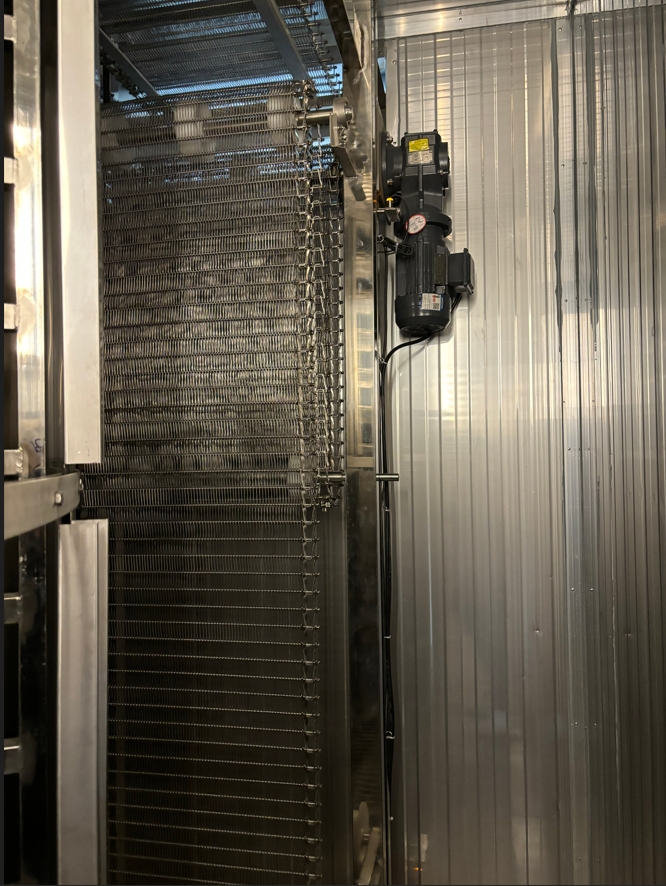When choosing a conveyor belt for a freezing machine, several factors need to be considered, including the type of food, the production environment, the material of the belt, and its design. Here are some key factors and suggestions to help you select the appropriate conveyor belt for a freezing machine:
1. Material Selection
The material of the conveyor belt should be chosen based on the working environment of the freezing machine and the type of food being processed. Common belt materials include:
Stainless Steel: Corrosion-resistant, suitable for high and low temperatures, and applicable to most food processing environments.
Plastic: Lightweight and corrosion-resistant, suitable for some low-temperature environments, but less resistant to high temperatures.
Galvanized Steel: Lower cost but less corrosion-resistant than stainless steel, suitable for some non-food applications.
2. Design and Structure
The design and structure of the belt will affect its performance and lifespan. Common designs include:
Flat Wire Belt: Suitable for most foods, providing a stable conveying surface.
Spiral Wire Belt: Suitable for applications requiring rotation or inclined conveying, such as spiral freezers.
Chain Link Belt: Suitable for heavy-duty applications, offering greater tensile strength and stability.
3. Aperture and Mesh Size
The aperture and mesh size of the belt should be chosen based on the size and shape of the food to ensure even cooling and quick freezing, while preventing small items from falling through.
4. Temperature Resistance
The belt should have good low-temperature resistance, maintaining stability and strength at freezing temperatures.
5. Cleaning and Maintenance
The belt should be easy to clean and maintain, especially in food processing environments where hygiene standards are high. Choosing a design that is easy to disassemble and clean can reduce downtime and maintenance costs.
6. Food Safety
Choose belt materials and designs that meet food safety standards to ensure no contamination of the food. For example, food-grade stainless steel and non-toxic plastic materials.
Specific Recommendations:
Consider the Type of Food: For quickly freezing meat, seafood, vegetables, etc., choose stainless steel flat wire belts or chain link belts for durability and stability.
Consider the Production Environment: In highly corrosive environments, choose higher-grade stainless steel materials like 304 or 316 stainless steel.
Consider Production Volume: For large-scale production, choose wide, high-tensile strength belts to ensure efficient production.
Examples:
Freezing Seafood: Suitable for stainless steel flat wire belts with moderate mesh size to ensure even cooling of seafood.
Freezing Vegetables: Suitable for stainless steel spiral wire belts to ensure even freezing and shape retention of vegetables.
Conclusion
When choosing a conveyor belt for a freezing machine, consider factors such as material, design, aperture size, temperature resistance, cleaning and maintenance, and food safety. Select the appropriate belt type and specifications based on specific production needs to ensure production efficiency and product quality. If unsure about the best choice, consult with belt manufacturers or professional suppliers for targeted advice and solutions.
Post time: Jun-26-2024

